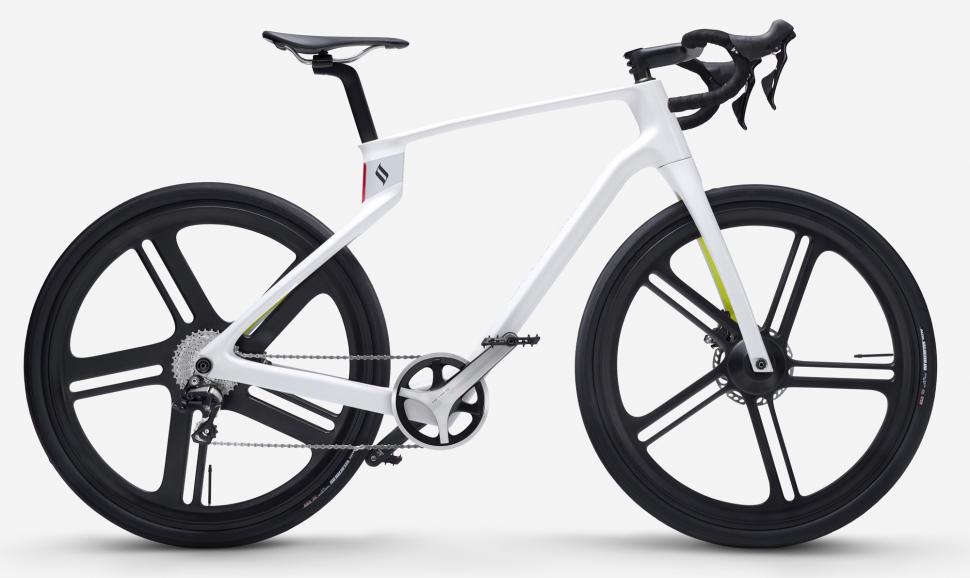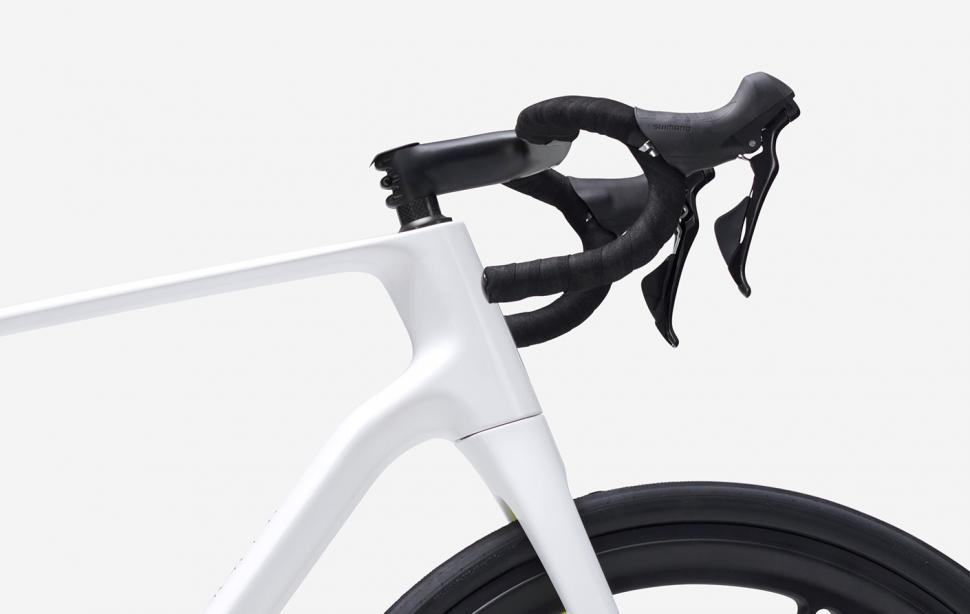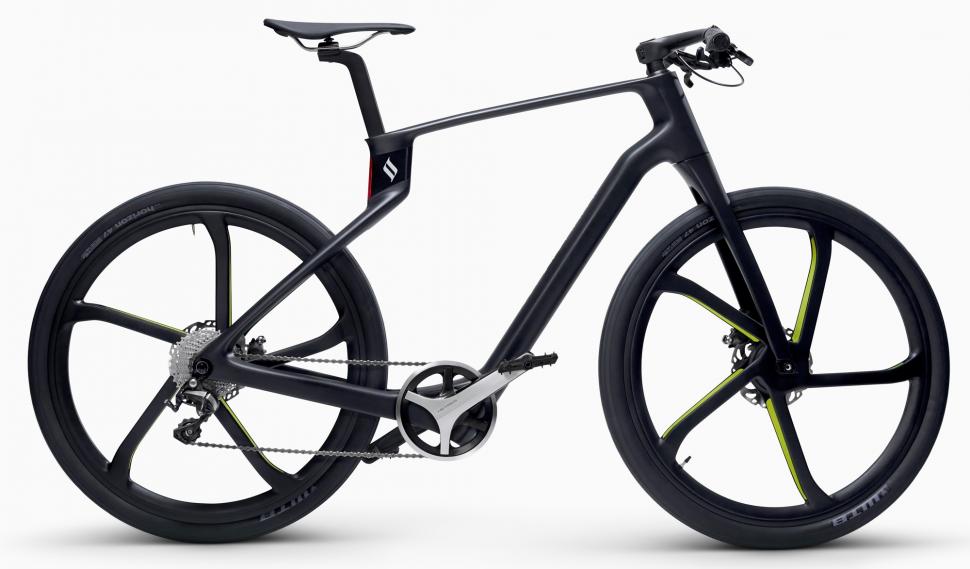- News
- Reviews
- Bikes
- Accessories
- Accessories - misc
- Computer mounts
- Bags
- Bar ends
- Bike bags & cases
- Bottle cages
- Bottles
- Cameras
- Car racks
- Child seats
- Computers
- Glasses
- GPS units
- Helmets
- Lights - front
- Lights - rear
- Lights - sets
- Locks
- Mirrors
- Mudguards
- Racks
- Pumps & CO2 inflators
- Puncture kits
- Reflectives
- Smart watches
- Stands and racks
- Trailers
- Clothing
- Components
- Bar tape & grips
- Bottom brackets
- Brake & gear cables
- Brake & STI levers
- Brake pads & spares
- Brakes
- Cassettes & freewheels
- Chains
- Chainsets & chainrings
- Derailleurs - front
- Derailleurs - rear
- Forks
- Gear levers & shifters
- Groupsets
- Handlebars & extensions
- Headsets
- Hubs
- Inner tubes
- Pedals
- Quick releases & skewers
- Saddles
- Seatposts
- Stems
- Wheels
- Tyres
- Health, fitness and nutrition
- Tools and workshop
- Miscellaneous
- Cross country mountain bikes
- Tubeless valves
- Buyers Guides
- Features
- Forum
- Recommends
- Podcast
TECH NEWS
 Superstrata Terra - 1.jpg
Superstrata Terra - 1.jpgSuperstrata unveils "world’s first custom 3D-printed unibody carbon-fibre bike"
California-based Superstrata has unveiled what it calls "the world’s first made-to-measure 3D-printed bicycle with an impact-resistant unibody carbon-fibre frame". The Superstrata bikes are made by Arevo, a company that specialises in continuous carbon-fibre products for aerospace.
Superstrata says, "The Superstrata [the name of the bikes as well as the brand] touts a true unibody construction, 3D-printed in a single pass of continuous carbon-fibre thermoplastic composite.
"Unlike other carbon-fibre bikes whose frames are glued and bolted together using dozens of individual parts and fabricated from previous-generation thermoset composite materials, the Superstata frame is constructed without joints or glue for seamless strength. It’s also produced using next-generation thermoplastic materials, making it extremely impact resistant, yet remarkably lightweight."
Superstrata says that the fact that it uses thermoplastic rather than thermoset means that the frame is already cured straight off the print bed and it's recyclable too.
Although they're frequently described as monocoque, carbon-fibre frames made in moulds usually have a front triangle and stays that are produced separately, and then bonded together later.
The fact that Superstrata says its bikes are 3D printed is key to the whole thing. We've heard of many 3D printed parts in the bike industry before, such as Specialized's S-Works Power with Mirror Tech saddle, and we've even heard of 3D printed frames. The Urwahn Bikes X Vagabund Studfuchs commuter bike that we covered last year has a steel frame that has been produced using 3D printing technology, for example, but only for the main lugs (bottom bracket, head tube, seat tube cluster and rear dropouts). 3D printed carbon-fibre thermoplastic composite, though, is a new one on us.
“This bike was designed to leverage all the benefits of this new manufacturing technology to get the best of both worlds: strength and lightness,” said Bill Stephens, the designer behind the Superstrata bikes.
Stephens is an experienced bike designer with four Eurobike Gold awards to his name thanks to work with brands like Niner and Factor.
On a video presentation for the 2019 Eurobike Academy he said, "[I thought that] so long as 3D printing is the process that I've always known it to be, it's usefulness is going to be limited to prototypes. I've always envisioned 3D printers as being basically large inkjet printers spitting out globs of material that bond with adjacent globs of material to form static volumes.
"And Greg [LeMond, the three-time Tour de France winner who introduced Stephens to Arevo] says, 'A-ha! That's what Arevo is doing differently. They are laying down long continuous fibres around a whole part just like you would with unidirectional carbon-fibre strips'.
"Conventional 3D printing creates parts that are what are called isotropic, meaning their dynamic performance is uniform in all directions, but Arevo's process is made of these long continuous fibres that wrap around the whole part, creating a performance that's anisotropic.
"It means that the parts... can be fine-tuned... and the cool thing is that they're doing this on a production basis and not just for prototypes."
Arevo developed the software and the process and wanted to create a consumer product to showcase it, hence bringing in Stephens to design the bikes.
Superstrata says that the technology allows it to build a lightweight (the claimed frame weigh is 1.3kg, which isn't exceptionally light) and ultra-strong frame quicker than using moulds, and with less manual labour.
It also says that the system allows for identical reproduction when required while permitting a whole lot of customisation which is impossible with a mould-built frame because moulds are incredibly expensive and slow to make (although customisation is easier if the frame is built using tube-to-tube tech).
The frame can be built to suit your height, weight, arm and leg lengths, riding positions and even preferred stiffness levels, says Superstrata, with more than half a million possible combinations.
Two versions of the Superstrata will be available: the Terra drop handlebar bike and the Ion e-bicycle, which has a claimed range of up to 55 miles (depending on terrain, rider weight, and so on) and can be fully charged in two hours.
Both are built for disc brakes and neither comes with a seat tube – well, not in the conventional sense of one that attaches to the bottom bracket shell. As you can see from the pics, there's a whole lot of fresh air in the centre of the frame.
Not having seen the bikes never mind ridden them, we can't tell you how that affects frame stiffness or ride quality. It does mean there's no way of mounting a front derailleur, each of these bikes coming with a single chainring.
The pictured Superstrata Terra is built with a Shimano Metrea chainset and 11-speed rear derailleur (which isn't cabled in the photos, by the way). The brakes are cable operated (and, let's be honest, the handlebar taping isn't good). The saddle is from Fabric and the tyres are Maxxis Velocita AR. Tyre options go up to 40mm in width.
The Superstrata Ion is also built up with Shimano Metrea groupset components and a Fabric saddle. The tyres are WTB Horizon in a 47mm width.
In both cases the wheels are Superstrata's own.
Superstrata says that additional options include different genres (racing, street, gravel, touring), wheel material (metal or carbon fibre), and colourways (light or dark).
The Superstrata Terra Bicycle will retail for $2,799 (around £2,220) and the Ion E-Bicycle for $3,999 (£3,172). Both are available for pre-order now with shipping scheduled for December.
Get more info from www.superstrata.bike and Superstrata's Indiegogo crowd funding page.
Mat has been in cycling media since 1996, on titles including BikeRadar, Total Bike, Total Mountain Bike, What Mountain Bike and Mountain Biking UK, and he has been editor of 220 Triathlon and Cycling Plus. Mat has been road.cc technical editor for over a decade, testing bikes, fettling the latest kit, and trying out the most up-to-the-minute clothing. He has won his category in Ironman UK 70.3 and finished on the podium in both marathons he has run. Mat is a Cambridge graduate who did a post-grad in magazine journalism, and he is a winner of the Cycling Media Award for Specialist Online Writer. Now over 50, he's riding road and gravel bikes most days for fun and fitness rather than training for competitions.
Latest Comments
- chrisonabike 1 sec ago
Yeah - only there may (currently) be other vehicles / street trees (we love them! Don't touch our trees!) to obscure vision....
- Secret_squirrel 21 min 23 sec ago
Um. Call me picky but what's the point in spec'ing an internally routed head tube then not using it? it looks a bit naff.
- David9694 1 hour 10 min ago
Another Conservative bemused at how but a Conservative policy is turning out
- hawkinspeter 3 hours 51 min ago
Controversial £15 million Park Street scheme will 'gridlock' Bristol:...
- Global Nomad 6 hours 39 min ago
would be good to see you test the Newmen wheels the weight/price ratio is extremely good and suggests that europeans can match the chinese in this...
- mdavidford 8 hours 59 min ago
I don't think you have. I think their point was:...
- jamesha100 18 hours 54 min ago
Should be a lifetime driving ban. Who could seriously argue against the justice of that in this case?
- thax1 1 day 1 hour ago
Another 'sound-alike' mid tier offer, so I get all excited and buy a bunch of them thinking I've got an absolute steal. Only to then realise I've...
- mdavidford 1 day 1 hour ago
first cast out the beam out of thine own eye




Add new comment
5 comments
Ads for this have been popping up on my FB page daily for the past few days, with glossy images of sleek lines and sunny backgrounds. As you rightly point out, none of the images show the bike 'cabled-up', and as I can make out, there are no cable ports for internal cabling either. I suspect that the end product will look much different to what we see here. And mechanical disc brakes? The photos look like they have flat mount hydro calipers, but once you analyse the specs then, yes, it does say mechanical disc brakes (in which case, I'm out - not that I was ever in).
I think these crowdfunding pages need to come with a massive caveat emptor warning. I recently 'funded' a new type of coffee maker on the back of glossy photos, swish video and promises of impressive performance. Since then the design has changed and the timescale increased - I'm not saying that this is necessarily a bad thing, the changes sound like they will improve the product - but it just shows that what you see is probably not what you will end up with.
Definitely and I'm surprised there isn't a single note of caution in this entire piece, it just reads like an extended advert for the product which I feel is irresponsible. This type of crowd funded project is extremely high risk because there's a very real chance backers receive nothing and lose all their money. Not because I think it's a scam but because it's a complex new type of product that there isn't even a prototype for yet, so the product may well not even work never mind potential problems in manufacturing and distribution which have been major headaches for previous crowd funded projects.
The fact they've gone for a big marketing push with lots of ads and pictures before the bike is even a working prototype sets a lot of alarm bells ringing. I also dislike the fact they've plastered their crowd funded page with all the various site logos including road.cc implying their endorsement when none of these sites have even seen the bike never mind been able to test ride it.
After the SpeedX mess which started off very similar to this one I'd hoped cycling sites might have learnt from it and been more careful but so far it's just an exact repeat with plenty of promotion and completely ignoring the type of risk this project has. I certainly hope this one goes well and they deliver as expected but that doesn't change the fact there is a lot of risk and that should be highlighted, sites like this certainly should not be promoting something like this with what is effectively just a long advert for it.
Why does every out of industry wannabe have to chose Mag Wheels?
The 80's BMX scene called and want them back.
Welcome to the future.
Noice! Though do you have to chop down your seatpost if you want to lower your saddle? (and where does the Di2 battery go?)